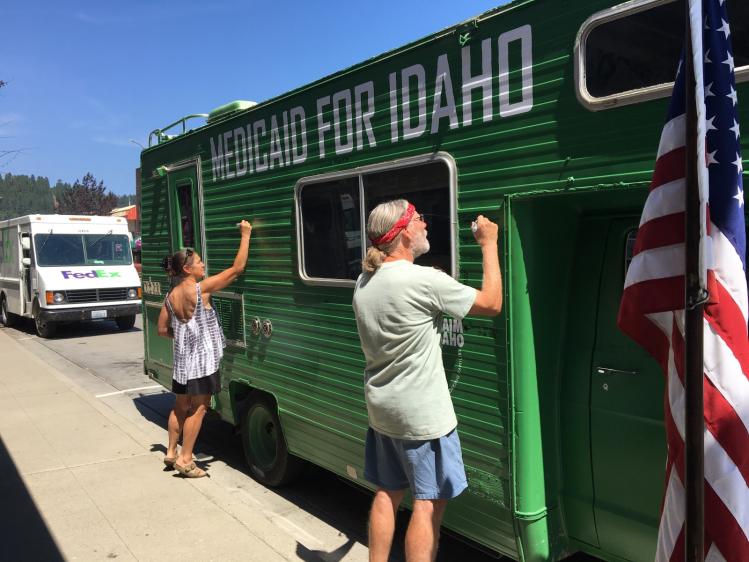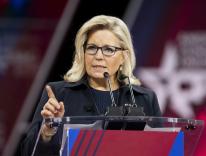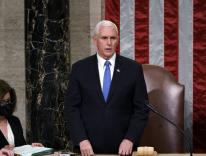
Author Luke Mayville also discussed grassroots activism and Reclaim Idaho with Commonweal’s Associate Editor Matthew Sitman on the Commonweal Podcast. Listen here:
Last month, Missourians approved a constitutional amendment to expand their Medicaid program and extend government-sponsored health-care coverage to more than 230,000 people. Progressives rightly celebrated the win, but the results also confirmed a dismaying divide: the vast majority of rural Missourians opposed the amendment. It lost by an average of two-to-one in rural counties—only slightly outperforming Democratic Sen. Claire McCaskill’s margins in her losing bid for reelection in 2018. Overall, the amendment carried only eight of the state’s 114 counties.
It was not that rural Missourians uniformly voted against the measure. More than 200,000 of them favored it, and their votes helped lift the amendment to victory. But it was striking that such large majorities in rural counties opposed expanding Medicaid, despite the fact that those counties have the highest rates of uninsured workers.
Pundits certainly noticed the lopsided nature of the Missouri vote. Discussing the matter on the podcast Pod Save America, former Obama speechwriter Jon Favreau didn’t seem especially concerned by the lack of support for Medicaid expansion in poorer, rural parts of the state. He optimistically noted that the amendment made up for this by overperforming with middle- and upper-income voters in urban and suburban areas.
Favreau’s co-host Dan Pfeiffer disagreed. He lamented “a steady erosion” of rural support for the Democratic Party and progressive causes since the Obama era. According to recent Pew Research Center analysis, rural voters were nearly as likely to identify as Democrats as Republicans from 1994 all the way through 2008, when Obama captured 45 percent of the rural vote nationally. In the years that followed, however, rural support for Democrats declined dramatically and the GOP gained a twenty-point advantage with these voters.
This trend should worry progressives. Addressing some of our nation’s most pressing economic issues—such as corporate consolidation of agriculture and unequal access to broadband—will require the active participation of the rural communities most affected by them. But there’s also the troubling fact that gerrymandered districts give rural voters disproportionate power in shaping the House of Representatives. The Senate, which awards two seats to each state regardless of population, gives outsized power to rural voters as well.
Even if measures such as Medicaid expansion in Missouri can narrowly win on the strength of the urban and suburban vote, the long-term viability of any progressive economic agenda will require stronger rural support. But this is a daunting challenge, especially considering the ever-widening political chasm between urban and rural voters. What will it take to revive economic populism in rural America?
In the years since 2017, when Maine became the first of seven states to put Medicaid expansion on the ballot, it has generally been the case that most rural voters have opposed expansion. In Nebraska, a mere eight of ninety-three counties approved the measure, and similar results were seen in other states: seven of seventy-seven counties in Oklahoma; five of fifty-six counties in Montana; and nine of twenty-nine counties in Utah. In each of these states, expansion racked up large margins in the most densely populated counties and underperformed in rural counties.
One state, however, was a notable outlier. In Idaho, Medicaid expansion won rural counties in a landslide. The measure won 61 percent of votes statewide, the largest margin of any state, and it won a majority of the vote in thirty-five of the state’s forty-four counties.
Bear Lake County, Idaho, with a population of under 6,000 people, gave Hillary Clinton just 8.7 percent of the vote in 2016. Two years later, Medicaid expansion won a majority of the county’s votes, outperforming Clinton by over 40 points. As in other states, Medicaid expansion won big in Idaho’s larger cities and in left-leaning college towns and resort communities. But it also won big in the state’s five least-populous counties. It won in North Idaho counties that have recently been hotbeds for Tea Party conservatism, and it won in East Idaho counties that have not voted Democratic in generations.
How did this happen? After all, Idaho is arguably the most conservative of the seven states where Medicaid expansion has been on the ballot. Republicans have dominated both legislative chambers and held the governorship since 1995, and only 12 percent of voters were registered Democrats in 2018. Donald Trump defeated Clinton by over thirty points in the state and carried forty-two of forty-four counties in 2016. So why did rural Idahoans diverge so sharply from rural voters in six other states and vote overwhelmingly for government-sponsored healthcare?
A few friends and I founded the grassroots organization Reclaim Idaho in the summer of 2017, and our first goal was to expand Idaho’s Medicaid program. Earlier in the year, we’d successfully organized a small army of volunteers in our hometown of Sandpoint, Idaho, to knock on doors for a $16 million school levy. Determined to try our model of bottom-up organizing on a statewide scale, we identified Medicaid expansion as a promising and worthy cause; not long afterward, we hit the road in a bright-green, spray-painted camper with the slogan “Medicaid for Idaho” emblazoned across the side.
Driving the “Medicaid Mobile” to twenty different communities in every region of our expansive state, we sought to identify potential volunteers who would form teams and find leaders who were willing and able to help coordinate those teams. At the start of the tour, we hadn’t yet filed to begin a formal signature drive. But in the absence of a formal petition, we made the camper itself a petition by giving out Sharpie markers and inviting supporters to sign the surface of the camper with their name and town.
Months later, when we launched a formal signature drive to qualify Medicaid expansion for the ballot, we had the makings of volunteer teams in nearly half of Idaho’s forty-four counties. Many of them were prepared for a strategic signature-collection campaign as soon as we were ready to circulate the petition.
The most distinctive aspect of our approach was the decision to turn to enthusiastic volunteers, and not just donors, to fuel our campaign. During the campaign’s early stages, we were advised by consultants to take a very different path: the best way to begin was by aggressively lobbying for the support of big donors and influential organizations. One consultant advised us to focus our energy on fundraising in order to pay for an opinion poll. If the poll turned out to be favorable, we should then use the poll to make a second pitch to donors and solicit much larger donations. This donor-focused strategy was based on the assumption that it would cost at least a million dollars to even get an initiative campaign off the ground.
But rather than spend our time raising large sums of money from wealthy donors or pitching our project to the leaders of existing organizations, we traveled the state and began engaging with potential volunteers. We built relationships with people and helped them get organized, and we raised funds to support our organizing from many of those people.
From the beginning, we imagined thousands of potential volunteers and local leaders scattered across the state. We’d seen unprecedented crowds of progressives come out for the 2016 caucuses and we’d seen thousands more come out for the 2017 Women’s March—not just in Boise but in cities and towns in every region of the state. Meanwhile, Idaho’s political establishment had refused to act on the healthcare issue for six straight years, years preceded by a deep economic downturn from which many had never recovered. While touring the state, we surveyed Idahoans at random in parking lots and gas stations, asking them simple questions like “What do you think of healthcare in Idaho?” and “Is your healthcare affordable?” Hundreds of personal stories convinced us that Idaho’s healthcare crisis was deeply felt by a majority of Idahoans in every region of the state. Our hunch was that thousands of Idahoans would respond to a clear call to action.
“People are waiting for you to ask them to do something big.” That’s the opening line of Becky Bond and Zack Exley’s Rules for Revolutionaries, a book that lays out the theory of “Big Organizing” that informed Bernie Sanders’s insurgent 2016 primary campaign. The book’s bold claim—and the core principle of Big Organizing—is that campaigns tend to drastically underestimate the will and ability of ordinary people to make monumental change. There are people out there—not all, but many—who are yearning to help do something big. When presented with a worthy enough cause and a credible plan of action, they will jump at the opportunity to play a meaningful role in the effort. Many people are just waiting for the invitation.
When we decided to launch our campaign, we went all in on the belief that thousands of Idahoans would take up the fight to help secure healthcare for nearly one hundred thousand of their neighbors. That belief was quickly vindicated. Within weeks, we were able to reconnect with people we’d met during our statewide tour and form teams of committed volunteers in fifteen counties. As the campaign went on, the list of active counties grew. Most critically, in each of those counties we were able to recruit a committed county leader who would take responsibility for coordinating much of the local volunteer work.
During the final weeks of the petition drive, a number of established organizations joined the effort. One group employed paid signature-gatherers to canvass several of Idaho’s urban communities. But the vast majority of signatures needed to qualify our initiative for the ballot were collected by a movement of volunteers—something almost unheard of in the world of ballot initiatives. What consultants predicted would cost at least a million dollars to do, our volunteer-driven campaign did for under $50,000.
Our reliance on volunteers did not just save the campaign money. It gave us something that money couldn’t buy: an authentic presence in rural communities across the state. In recent years, as organized progressive power in rural communities has mostly disappeared, progressive campaigns have resorted to mass-marketing rather than grassroots organizing and face-to-face persuasion. Door-knocking and other grassroots methods have not been abandoned altogether, but such tactics are mainly used to target urban and suburban voters. These are the voters who are thought to constitute the new base of the Democratic Party: the mostly affluent, well-educated coalition whom Rahm Emanuel has dubbed “The New Metropolitan Majority.” To the extent that this assumption guides campaigns, strategists are reluctant to expend precious time and resources on rural voters. If rural voters engage with progressive campaigns at all, it is likely to be as viewers of television ads, not as participants in a real conversation.
But the truth is that there are people everywhere—including in the tiniest towns—who are willing to work for economic justice. If progressives are serious about building a durable coalition that supports a more just economy, we need to harness the righteous ambitions of Americans no matter where they live. That means building campaigns and organizations that search these people out and invite them to play a meaningful role. It means working alongside them and treating them not as consumers of well-crafted talking points, but as allies in a common cause.
During the signature drive and in the months leading up to the vote, the efforts of our county teams became local campaigns in themselves. Volunteers appeared on the nightly news and the front pages of newspapers. County leaders were recognized for their work with awards from local civic groups. Volunteers developed confidence as persuasive speakers and organizers. They developed lasting relationships, and many spoke of discovering the extent to which others in their community shared many of their own core commitments. Several county leaders stepped up to run for office for the first time, advocating for Medicaid expansion along the way.
What all of this amounted to was a unique, if old-fashioned, strategy of persuasion. Rather than rely exclusively on poll-tested advertisements on television and social media, we challenged local residents to appeal to their neighbors directly. It may not be true—as many progressives dream it to be—that bold appeals and face-to-face persuasion can reliably convert rural voters to the progressive side of every issue. But when it comes to many bread-and-butter issues of economic justice—stagnant wages, rural hospitals going bankrupt, public schools closed for lack of funding, small businesses squeezed out by corporate consolidation—these realities are deeply felt, and face-to-face appeals can persuade voters that an alternative is possible. People who might not consider themselves progressive can be rallied to causes that make their lives and those of their neighbors more free and secure.
In some Idaho counties, loyal teams of five to ten volunteers bore the brunt of the work. Elsewhere, a groundswell of volunteers joined the effort. In Bonner County, the mostly rural county where I grew up, there were eventually over two hundred people who carried petitions. Once the initiative had qualified for the ballot, many of those volunteers continued as local spokespeople for the cause all the way up to Election Day—discussing the issue with neighbors, writing letters to the editor, even appearing on radio shows to debate local politicians. Medicaid expansion would win Bonner County with a solid majority of the vote, despite the fact that Trump had won the county by a 35-point margin just two years earlier. At last count, there were 2,471 Bonner County residents newly enrolled in the Medicaid expansion program, many able to see a doctor for the first time in their adult lives.
Please email comments to [email protected] and join the conversation on our Facebook page.
Share
Previous Story
‘It’s for RBG’
Next Story
Justice Thirty Years in the Making

